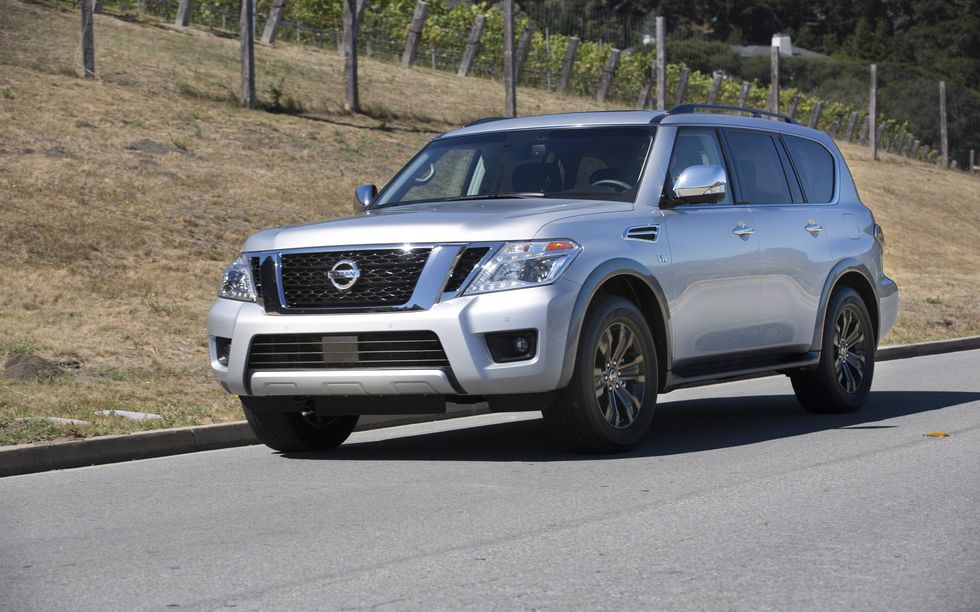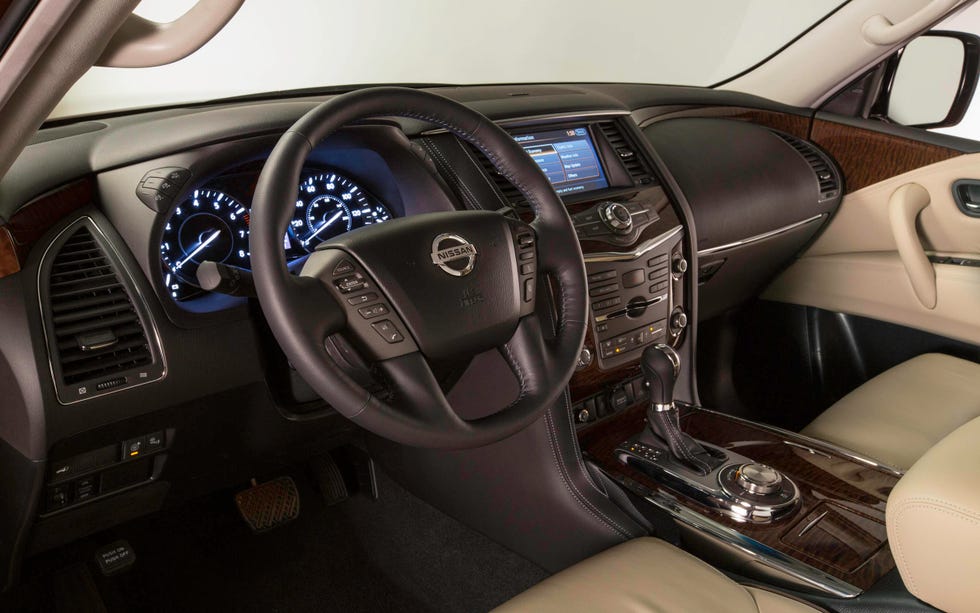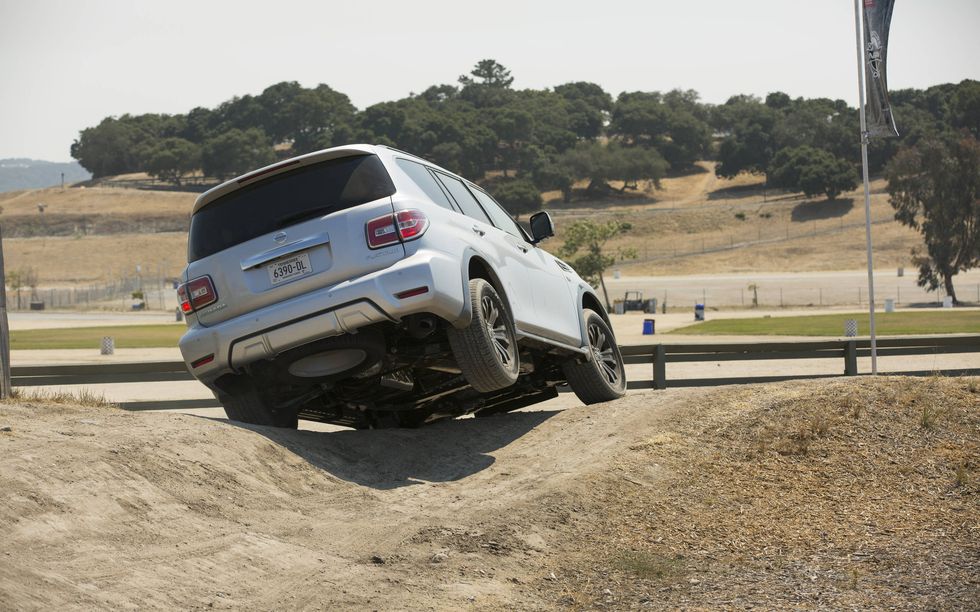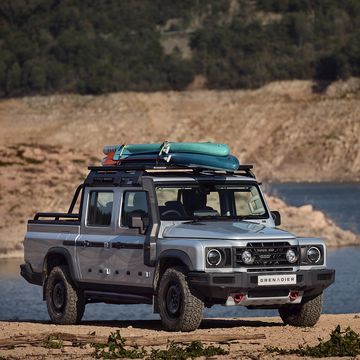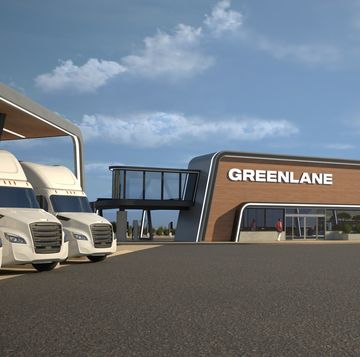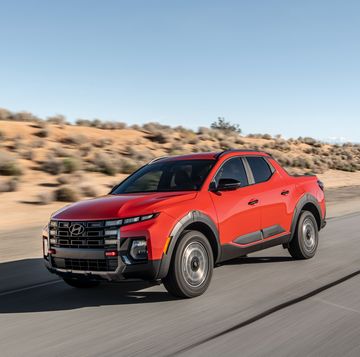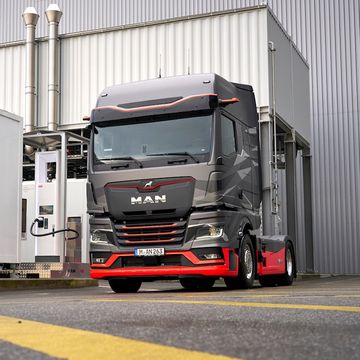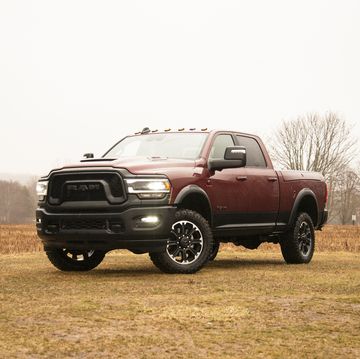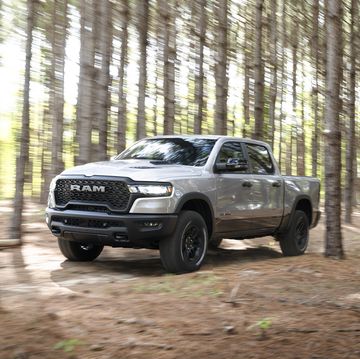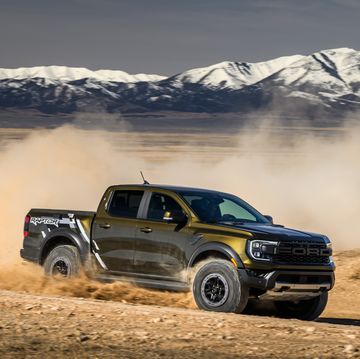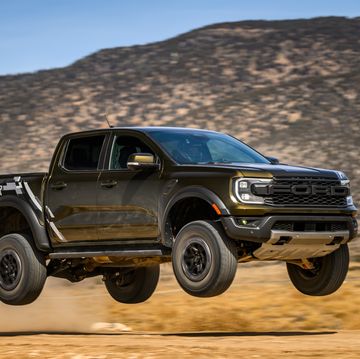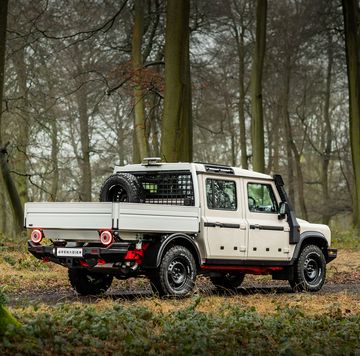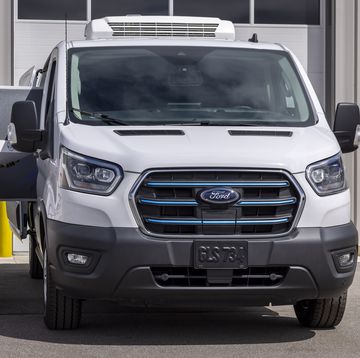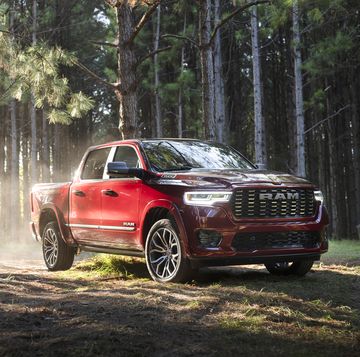Call it luck, serendipity or just smart product planning, but Nissan lands in the right place with the right product as it introduces a redesigned full-size Armada SUV for the 2017 model year. A recession firmly in the rearview mirror combined with what feels like half-price gasoline has sparked new life into the dormant body-on-frame SUV, and these big three-row behemoths are again popular. It’s still not a huge market, though, and domestic manufacturers capture the lion’s share of sales, so why make the effort? Simple: Full-size SUVs are the most profitable niche in the industry, so there’s a lot of money to be made even on a low-volume product.
If you’re thinking the new Armada looks familiar, that’s because it now shares underpinnings (and some upper-body styling cues) with the Infiniti QX80; both share the global Patrol SUV platform. You may not know the Patrol name, but it's a badge with cachet among the hardcore off-road set and third-world warlords in a vein similar to that of Toyota’s Land Cruiser. The result is a hefty SUV with serious underpinnings, including a fully boxed all-steel frame with rails 1.5 inches thicker than that of the outgoing Armada and 8,500 pounds of towing standard. Styling maintains the basic outlines of Infiniti’s love-it-or-hate-it QX80 but sticks with a more traditional, boxy front end and profile details. The resulting design and lower Nissan pricing may not be as dramatic, but they’re likely to appeal to a far broader swath of the buying public.
To help move 8,500 pounds, plus its own not-insignificant girth, around, the Armada gets a new 5.6-liter V8 engine with direct injection, good for 390 hp and 394 lb-ft of torque while burning regular fuel. The more significant improvement comes from a seven-speed automatic transmission that replaces the dated five-speed auto on the previous Armada. Four-wheel disc brakes are standard, as is a double-wishbone coil-spring suspension front and rear (with rear load-leveling) to give this big SUV a smoother, more carlike ride than its trucky predecessor. However, since towing is generally expected to be part of the average Armada customer’s repertoire, a Class 2 hitch and trailer wiring connection is standard equipment across the line, along with 8,500 pounds of towing capacity in both 2WD and 4WD models.
Standard eight-passenger seating ensures the Armada can haul you and all your friends to the boat launch, but keep in mind this is a full-size SUV with dimensions similar to that of the Chevrolet Tahoe and Mercedes GLS: With all three rows in use, cargo room is more limited than you might expect, and it’s not a substitute for a Chevy Suburban or Ford Expedition EL. Still, access to the third row is good even if the floor is relatively high, and your passengers will enjoy standard leather seating (heated in front) and comfortable surroundings; Nissan also claims best-in-class second-row headroom and legroom. Technology offerings vary depending upon trim level, but a 13-speaker Bose sound system and satellite navigation are both standard across the Armada lineup, which consists of SV, SL and Platinum trim levels.
What’s it like to drive?
From the driver’s seat, anyone with experience in Infiniti’s bulbous QX80 will find the 2017 Armada instantly comfortable; the high seating position, wide center console and curvaceous interior styling make for a commanding view and near-luxury feel. Nissan sticks with a traditional console-mounted gearshifter; put it in D, and the Armada quietly puts its nearly 400 hp to use in a hurry. As big as this truck is, the combination of smooth engine power at low rpm and well-timed shifts from the seven-speed automatic make it feel far lighter than the specs suggest. Hydraulic rack-and-pinion steering does its part, too, making it easy to place the Armada on the road and giving the smooth, progressive steering feel we miss from even the best electric-power-steering setups today.
Nissan spoke at length about its efforts toward ride comfort and noise control on the 2017 Armada, and there’s little doubt about this truck’s on-road refinement. Expansion joints and minor potholes are barely noticeable, and the engine note is never intrusive even during full-throttle passing. Some minor wind noise around the Armada’s large side mirrors is still audible despite the laminated side glass, but that’s partly due to the sheer size of the mirrors needed on this beast. Though we didn’t tow during our time with the Armada, we did do some mild off-roading, and the truck is as capable as you’d expect even with one wheel off the ground. The Rubicon Trail may not be in its future, but we can safely say a 4WD-equipped Armada can power through anything an American buyer is likely to throw at it.
Called “Surround View,” Nissan’s multi-camera parking and visibility aid has long been one of the industry’s best; software stitches together imagery from the cameras into an overhead 360-degree “bird’s eye” view of the vehicle, dramatically reducing the risk of bashing something or someone with one of the Armada’s distant bumpers. Nissan has added a feature that activates the cameras when the sonar-based proximity sensors detect an object, alerting the driver to the appropriate angle/camera. A press of the “camera” button on the dash will also (at low speeds) bring up a view of the Armada’s right front wheel, helping the driver navigate off-road obstacles or tight parking spaces. Move up to the available Safety Shield package, and a full suite of electronic nannies gets bolted in, including lane-departure warning, blind-spot warning, intelligent cruise control and backup collision intervention. Yes, it’s a lot of technology, but it makes living with a large SUV far easier, and it’s become commonplace enough that customers expect all of it (they just don’t necessarily expect to have to pay for it).
Do I want one?
Full-size SUV buyers have more -- and better -- choices for the 2017 model year than they’ve had for a decade, and the Nissan Armada does nothing to diminish the breed. It takes everything we like about the Infiniti QX80 and wraps it in sheetmetal that won’t make the neighbors laugh and point. Powerful and comfortable for daily commuting, the Armada offers room for large families or a serene perch upon which a solitary driver can survey pretty much everything except Peterbilt pilots.
Can the same be said for the GMC Yukon or Toyota Sequoia? Absolutely, but each brand’s biggest tank has its own unique flavor, and Nissan’s Armada redesign moves the nameplate from "also-ran" to "must-drive" if you’re shopping for a big utility.
Vehicle Model Information
ON SALE: August 2016
BASE PRICE: $45,395
POWERTRAIN: 5.6-liter V8, 7-speed automatic, 2WD (4WD available)
OUTPUT: 390 hp, 394 lb-ft torque
CURB WEIGHT: 5,576 lbs
FUEL ECONOMY: 14/19/16
PROS: Quiet, refined full-size SUV now competitive with the class leaders
CONS: Still thirsty; limited cargo room compared to long-wheelbase SUVs


